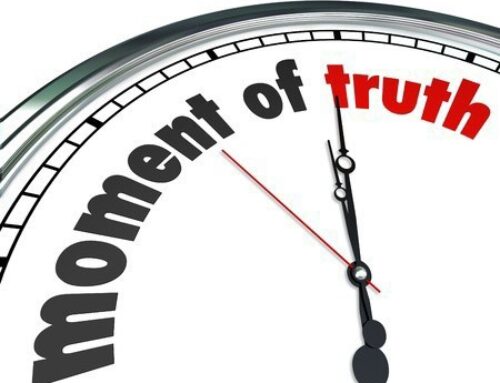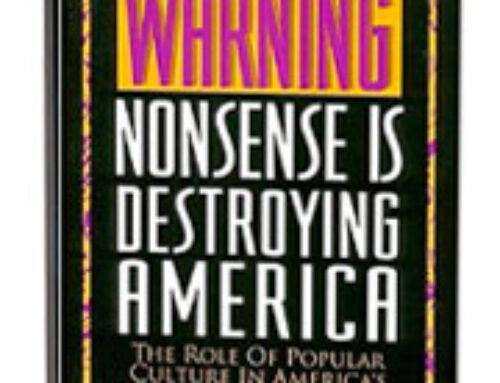
People who believe that most police are racist leaped to the conclusion that the policeman, Darren Wilson, had no reason other than racism to shoot Michael Brown and that the failure of officials to immediately arrest Wilson and charge him with murder proved that they were also racist. This thinking inspired the rage that led to protests and, in some cases, vandalism and looting.
People who believe that racism among police is rare or non-existent leaped to the conclusion that Brown must have provoked Wilson to the use of deadly force and that the protests were therefore completely unjustified.
A more balanced view of the police would have led to a very different conclusion than either of these: That the shooting may or may not have been justified but the evidence at the outset was insufficient to make any judgment. Though people holding this view may have tilted one way or the other, they were willing to suspend judgment until more evidence was discovered.
Incidentally, it is a reasonable assumption that the vast majority of Ferguson residents, both black and white, held this more balanced view because the population of that city is 21,000 and the number of protestors varied from less than a hundred to a little over a thousand, including opportunists from outside the area intent on causing trouble.
Later reports confirmed the wisdom of withholding judgment. A video was published showing Michael Brown brazenly stealing cigarillos from a store and then manhandling the owner when he objected. (At six feet four and close to 300 pounds, Brown dwarfed the diminutive storeowner.) Also, the police report claimed that Brown had been walking in the middle of the road with some friends and was simply asked to move to the sidewalk for safety’s sake. Other reports had Brown attacking the police officer, shattering his eye socket, and attempting to get his gun. Subsequently, the officer shot Brown EITHER as Brown was rushing toward him to renew the attack OR as he was holding up his hands to surrender. Several autopsies failed to establish certainty on this matter.
People’s reactions to the additional information generally matched their original reactions.
Those who believe most police are racist branded the video a slander of Michael Brown totally unrelated to subsequent events and intended solely to distract the public from the “murder” of Brown. Many became even more enraged than they were before and intensified their protests.
Those who believe police are seldom if ever racist became more firmly convinced that the protestors were overreacting. Incidentally, this group was no doubt predominantly white. (It is hard to imagine many black Americans, regardless of economic or social standing, being unaware that “driving while black,” “walking while black,” or simply being black can arouse police suspicion and, in some cases, provoke harassment.)
Those with a more balanced view did not dismiss the video so casually. “Even if it is admissible in court,” they reasoned, “Brown’s theft of the cigars and abuse of the storeowner speak to his character. And though they do not prove that he assaulted the police officer, they demonstrate that he was capable of such behavior.” (I believe that fair-minded Americans, black as well as white, reasoned this way, even though black Americans were understandably saddened by the thought and unlikely to express it openly for fear of being accused of siding with the police.)
The same pattern of belief shaping interpretations and reactions was evident among people emotionally far removed from the tragedy, whose positions demanded a more objective, cool-headed response. For example, the editors of the The New Yorker, Time, and Bloomberg Business Week, produced covers illustrating the “hands up in surrender” position allegedly taken by Brown but at that point unsubstantiated.
Worse, Missouri governor Jay Nixon, publicly called for “vigorous prosecution” to achieve “justice for [Brown’s] family.” Consider how outrageous this was—the highest elected official in the state, a lawyer no less, blatantly prejudging the case and condemning the policeman at a time when a significant amount of evidence was either unclear or undiscovered.
Let’s hope the truth about the incident is revealed, justice is served, and all Americans accept the outcome. Of course, it’s hard to be optimistic about the last result because too many people have deep-seated beliefs that they are unwilling to reconsider regardless of the evidence.
While we await further developments, the Ferguson case has already conveyed a number of lessons:
Firm beliefs about a person or group produce strong feelings that tempt us to form opinions without sufficient evidence or in contradiction of existing evidence.
Support from those who share our views and/or manipulation by those who have an ulterior motive can intensify our opinions, often without our awareness.
Strong opinions are difficult to change, particularly after we express them to others and our egos become involved. At that point our inclination is to defend our opinons and refuse to consider contrary evidence. Ironically, that inclination is often most powerful in cases where we initially rushed to judgment.
Acting on strong feelings without examining them critically can be foolish and/or dangerous, for example by leading us to support a cause that unworthy of our support and sometimes against our own interest.
A balanced perspective is not inborn or magically achieved. We need to actively pursue it by resisting instantaneous judgment, going out of our way to understand both sides of an issue (especially the side we are less inclined toward) and distinguishing between biased and unbiased sources of information.
Remembering these lessons may not prevent future tragedies like the one in Ferguson, but it will help us react to them more responsibly and keep them from compounding.
Copyright © 2014 by Vincent Ryan Ruggiero

